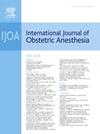产妇分娩镇痛助理(MALA):用于产科麻醉患者教育的新型人工智能互动化身
IF 2.3
3区 医学
Q2 ANESTHESIOLOGY
引用次数: 0
摘要
硬膜外镇痛是缓解分娩疼痛的金标准,但由于时间限制、语言障碍和健康素养的差异,对患者进行教育仍然具有挑战性。传统的教育方法往往不能确保足够的耐心理解。人工智能(AI)交互式化身为提供标准化、移情和可访问的患者教育提供了一种新颖的解决方案。本研究评估了产妇分娩镇痛助理(MALA)的内容效度和可用性,这是一个为产科麻醉教育设计的多语言人工智能化身。方法采用结构化专家评价法进行横断面描述性验证研究。在HeyGen上开发了一个支持28种语言的数字互动化身MALA,其中包含有关硬膜外镇痛、替代方案和常见问题的循证内容。10位专家(5位产科麻醉师,5位产科医生)独立审查了化身的互动,并以4分李克特量表对10个领域进行了评分。计算内容效度指数(I-CVI和S-CVI/Ave)。结果各领域评分均较高(平均评分≥3.2)。得分最高的是共情(平均3.7±0.48)、决策有用性(3.6±0.52)和准确性(3.4±0.70)。8个域的I-CVI达到1.00;两个领域得分为0.90。S-CVI/Ave为0.98,专家共识较强。患者教育材料评估工具具有较高的可理解性(87.1%)和可操作性(83.3%)。结论mala作为分娩镇痛的教育工具具有良好的内容效度和可用性。像MALA这样的人工智能化身的集成可以使患者教育标准化,减少临床医生的工作量。未来的研究应评估以患者为中心的结果和临床整合。本文章由计算机程序翻译,如有差异,请以英文原文为准。
Mothers’ Assistant for Labor analgesia (MALA): a novel artificial intelligence interactive avatar for patient education in obstetric anesthesia
Background
Epidural analgesia is the gold standard for labor pain relief, yet performing patient education remains challenging due to time constraints, language barriers, and variable health literacy. Traditional educational approaches often fail to ensure adequate patient understanding. Artificial intelligence (AI) interactive avatars offer a novel solution for delivering standardized, empathetic, and accessible patient education. This study evaluates the content validity and usability of the Mothers’ Assistant for Labor Analgesia (MALA), a multilingual AI avatar designed for obstetric anesthesia education.
Methods
A cross-sectional, descriptive validation study was conducted using structured expert review. MALA, a digital interactive avatar supporting 28 languages was developed on the HeyGen, incorporating evidence-based content on epidural analgesia, alternatives, and frequently asked questions. Ten experts (5 obstetric anesthesiologists, 5 obstetricians) independently reviewed the avatar’s interaction and rated 10 domains on a 4-point Likert scale. Content Validity Indices (I-CVI and S-CVI/Ave) were calculated.
Results
All domains received high ratings (mean scores ≥ 3.2). The highest scores were for empathy (mean 3.7 ± 0.48), usefulness in decision-making (3.6 ± 0.52), and accuracy (3.4 ± 0.70). Eight domains achieved an I-CVI of 1.00; two domains scored 0.90. The S-CVI/Ave was 0.98, indicating strong expert consensus. Patient Education Materials Assessment Tool also showed high understandability (87.1 %) and actionability (83.3 %).
Conclusion
MALA demonstrated excellent content validity and usability as an educational tool for labor analgesia. Integration of AI avatars like MALA may standardize patient education and reduce clinician workload. Future research should assess patient-centered outcomes and clinical integration.
求助全文
通过发布文献求助,成功后即可免费获取论文全文。
去求助
来源期刊
CiteScore
4.70
自引率
7.10%
发文量
285
审稿时长
58 days
期刊介绍:
The International Journal of Obstetric Anesthesia is the only journal publishing original articles devoted exclusively to obstetric anesthesia and bringing together all three of its principal components; anesthesia care for operative delivery and the perioperative period, pain relief in labour and care of the critically ill obstetric patient.
• Original research (both clinical and laboratory), short reports and case reports will be considered.
• The journal also publishes invited review articles and debates on topical and controversial subjects in the area of obstetric anesthesia.
• Articles on related topics such as perinatal physiology and pharmacology and all subjects of importance to obstetric anaesthetists/anesthesiologists are also welcome.
The journal is peer-reviewed by international experts. Scholarship is stressed to include the focus on discovery, application of knowledge across fields, and informing the medical community. Through the peer-review process, we hope to attest to the quality of scholarships and guide the Journal to extend and transform knowledge in this important and expanding area.

 求助内容:
求助内容: 应助结果提醒方式:
应助结果提醒方式:


